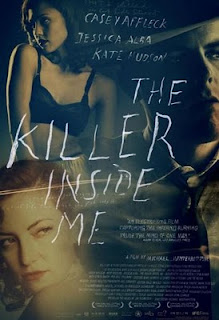Directed by Daniel Stamm
Written by Huck Botko & Andrew Gurland
The Last Exorcism begins as a story about a faithless preacher, Reverend Cotton Marcus (Patrick Fabian; Big Love). He was bred since childhood to be a preacher, handling his first sermon at the age of ten years old. Then, somewhere along the way Cotton began forgetting about what it meant to have faith and instead concentrated on whatever means required to pay the mortgage on the house and to pay for the medical care that his prematurely born son needs.
As he decided to quit preaching Cotton wanted to do one more deed for the world. He wanted to unveil the secret of exorcisms – they are not real. Cotton is convinced that the exorcisms he performed during his tenure as a priest – and he performed over one-hundred – were just psychological therapy for someone with a guilty conscience; someone hiding a secret from their loved ones because they are too ashamed to tell the truth.
Cotton decides to make a reality show. He randomly picks letters sent to him by dozens of people convinced that they or someone they know is possessed by a demon. His first case takes him and the two eager filmmakers deep into Louisiana where the recently widowed Louis Sweetzer believes that his daughter, Nell, is possessed, and what starts as a typical hustling job by Cotton, with his slide of hand tricks and string-pulled props soon turns into a battle against pure evil and a returning conflict with his faith in God.
The movie did a good job of capturing the aura of Louisiana with the beautiful scenery, the shoot-strangers-before-you-look-at-them attitude of its citizens, and the endless lingering essence of something supernatural; and while I am not a fan of reality-filmed movies or television, I don’t think the special effects and fright scenes would have looked as good as they did thus they would not have been as effective as they were. However, the downside to filming realistically is that the audience encounters a lot of dead air in between scenes which stricken any momentum gained by a good scare. If I wanted to watch actual recorded reality I would set up a camera at the park and record birds pooping on peoples’ cars all day.
Then, there is the ending. I didn’t hate it like the majority of the movie-going public did, but it wasn’t good enough to warrant much praising either. I didn’t mind it because it felt like an ending that would have happened back in the 1950’s or 1960’s, particularly in a Hammer film, but once the final act is over you realize that what could have been an epic or simply an awesome climax just became leftover fish sticks from two days ago.








